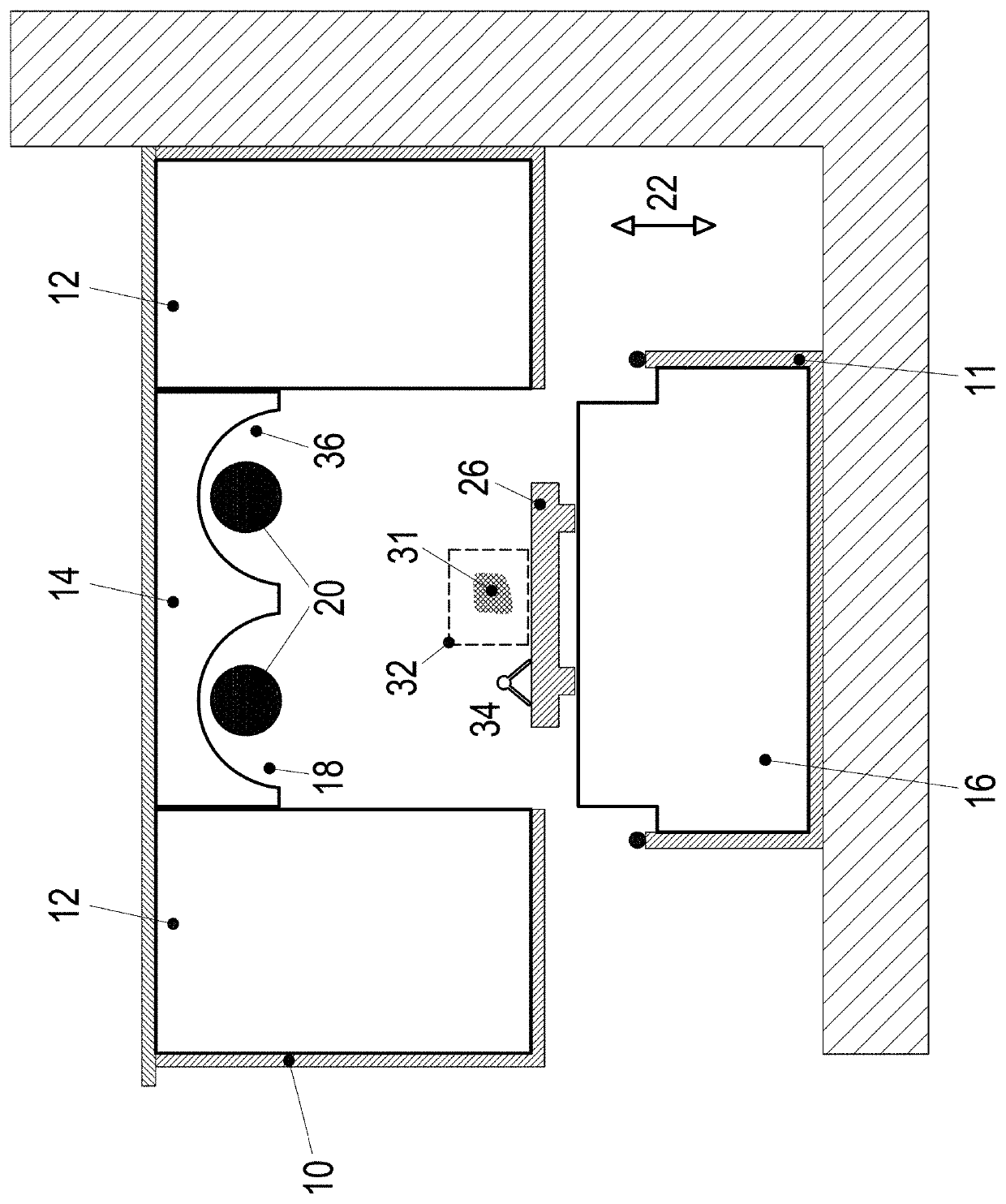Dental furnace
a technology of dental furnace and furnace, which is applied in the field of dental furnace, can solve the problems of conventional furnaces, inability to achieve uniform firing results, and inability to ensure predetermined temperature increase per time unit, so as to achieve fast and uniform firing of ceramic elements, reduce cooling time, and improve the effect of drying
- Summary
- Abstract
- Description
- Claims
- Application Information
AI Technical Summary
Benefits of technology
Problems solved by technology
Method used
Image
Examples
Embodiment Construction
[0027]The schematically illustrated and strongly simplified furnace comprises a firing chamber. The latter is defined by thermally insulated chamber walls, side wall 12, top 14 and bottom 16. The thermal insulation of the top 14 comprises two parabolic recesses 18 in the longitudinal direction, i.e. perpendicular to the drawing level. In these recesses a cylindrical heating element 20 also extending in the longitudinal direction perpendicularly to the drawing level is respectively arranged. The heating device may respectively comprise a plurality of heating elements 20. In particular, per heating element 20 at least one IR emitter is provided. Depending on the installation position, the orientation of the heating elements 20 may also be horizontal, transverse or the like, for example.
[0028]The housing bottom 11 and the firing chamber are adapted to be vertically displaced relative to each other in the direction of an arrow 22 for opening and closing the firing chamber. The housing b...
PUM
| Property | Measurement | Unit |
|---|---|---|
| wavelength range | aaaaa | aaaaa |
| temperatures | aaaaa | aaaaa |
| wavelength | aaaaa | aaaaa |
Abstract
Description
Claims
Application Information
 Login to View More
Login to View More - R&D
- Intellectual Property
- Life Sciences
- Materials
- Tech Scout
- Unparalleled Data Quality
- Higher Quality Content
- 60% Fewer Hallucinations
Browse by: Latest US Patents, China's latest patents, Technical Efficacy Thesaurus, Application Domain, Technology Topic, Popular Technical Reports.
© 2025 PatSnap. All rights reserved.Legal|Privacy policy|Modern Slavery Act Transparency Statement|Sitemap|About US| Contact US: help@patsnap.com

